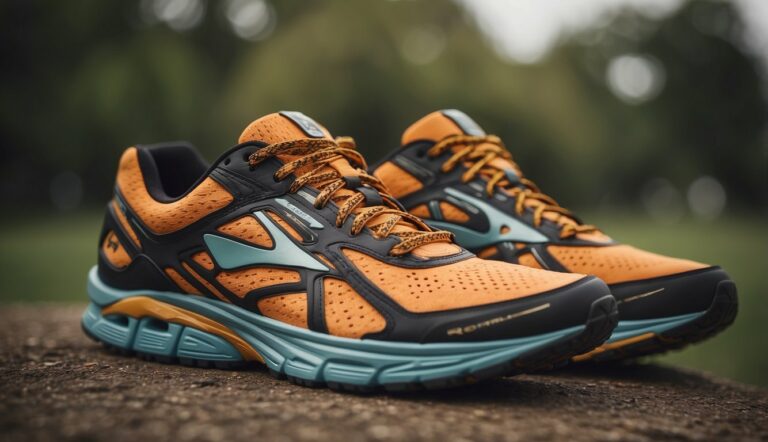How Toe Spacers Can Prevent Toe Overlap: Exploring the Benefits
Toe spacers are a straightforward yet effective tool in the realm of foot health. As someone who has seen their benefits firsthand, I can attest that these simple devices are excellent for addressing the common issue of toe overlap. By gently separating the toes, spacers help to realign them into a more natural position, preventing the crowding that often leads to discomfort and other complications.
With regular use, toe spacers can play a significant role in maintaining the proper alignment of your toes. They can counteract the compressive forces exerted by tight footwear, allowing the toe muscles to stretch and activate. This not only improves toe alignment but also reinforces the overall structure of the foot, contributing to better foot health and function.
Toe Overlap and Its Causes

When our toes begin to press against each other or overlap, it’s often a sign that they’re not getting the space they need. This unnatural positioning can cause discomfort and lead to foot conditions.
The Biomechanics of Toe Overlap
Toes are designed to spread out naturally to provide stability and support for the body. Overlapping occurs when toes are forced out of their natural position. This can happen due to several factors such as tight footwear, hereditary foot shapes, or a gradual shift in toe alignment over time. Persistent pressure from ill-fitting shoes or socks can push toes into a cramped position, which may eventually lead to overlapping.
Common Foot Conditions Leading to Overlapping
Certain foot conditions frequently result in overlapping toes. Bunions, which form at the joint at the base of the big toe, can cause the big toe to lean toward the second toe. Hammertoes, characterized by an abnormal bend in the middle joint of the toe, often lead to the affected toe tucking underneath or on top of its neighbor. Rheumatoid arthritis can alter the structure of the foot, leading to deformation and misalignment of the toes. These conditions do not just affect toe alignment; they can impair balance and cause pain during walking or standing.
The Role of Toe Spacers in Preventing Toe Overlap
Toe spacers, particularly those made of silicone, are designed to maintain proper toe alignment and prevent overlapping by gently separating the toes.
How Toe Spacers Work
When I use toe spacers, they fit comfortably between my toes, holding each toe apart from its neighbors. This physical separation encourages the toes to assume their natural position rather than bunching up or overlapping. By maintaining this alignment, the risk of overlapping toes and the discomfort that can accompany it is reduced.
- Material: Typically made of silicone, a flexible and soft material
- Design: Fits snugly between toes
- Function: Keeps toes apart to maintain natural alignment
The Benefits of Using Silicone Toe Spacers
I have found that silicone toe spacers offer several advantages:
- Comfort: Silicone is soft and flexible, reducing any sense of discomfort between the toes.
- Durability: They are resilient and can be used repeatedly without quickly wearing out.
- Hygiene: Silicone is non-porous, making it easy to clean and less likely to harbor bacteria.
By using silicone toe spacers, individuals may experience a decrease in the problems associated with toe overlap, such as corns and calluses, and enjoy better foot health overall.
Improving Foot Comfort and Health with Toe Spacers
Toe spacers are designed to address problems associated with toe overlap by maintaining proper toe alignment, which can lead to improved comfort and foot health.
Alleviating Pain and Discomfort
Toe overlap can cause significant discomfort and pain due to the unnatural pressure and friction between toes. By using toe spacers, I’ve observed that toes maintain their natural position, which reduces the stress on the foot. This in turn can alleviate the pain that comes with bunions, hammertoes, and other conditions caused by tight shoes and high heels. Users often report a feeling of relief when incorporating toe spacers into their foot care routine.
Promoting Better Balance and Foot Stability
Proper toe alignment is crucial for balance and stability while standing or moving. When toes are squeezed together, it can affect how weight is distributed across the foot. Toe spacers help by keeping the toes apart, which enhances the foot’s ability to balance the body effectively. From my experience, people who use toe spacers tend to find an improvement in their overall foot stability, particularly during activities that require a strong base of support, such as lifting weights or performing exercises that involve balance.
Toe Spacers and Athletic Performance
Using toe spacers can enhance athletic foot function and potentially prevent common sports-related foot injuries. These simple devices are instrumental for athletes looking to optimize their foot health and performance, particularly in sports like running.
Enhancing Athletic Foot Function
Foot alignment: One of the first aspects I always highlight is the importance of proper toe alignment for peak athletic performance. Toe spacers can reposition the toes into a more natural state, improving balance and the distribution of weight across the foot. This is especially crucial for runners, where foot mechanics play a pivotal role.
- Reduced toe crowding: Athletic shoes often squeeze the toes together; toe spacers counteract this by allowing each toe to move independently.
- Increased foot dexterity: Athletes using toe spacers may experience enhanced foot agility, vital for quick direction changes and maintaining a steady pace.
Prevention of Sports-Related Foot Injuries
Stress distribution: By promoting correct toe alignment, the stress on the foot is more evenly distributed, which can reduce the risk of overuse injuries. Repetitive stress is a common cause of concern for athletes, and mitigating this risk is a benefit that toe spacers offer.
- Less friction between toes: Separated toes mean less rubbing, which might otherwise lead to blisters and calluses, common annoyances that can hinder an athlete’s performance.
- Support during recovery: For athletes recovering from foot injuries, toe spacers can aid in maintaining proper toe alignment, which is critical during the healing process.
Choosing the Right Toe Spacers

When selecting toe spacers to prevent toe overlap, it’s crucial to consider the materials and design for a comfortable fit. Ensure proper guidance is sought from a healthcare professional to address individual needs.
Materials and Design Considerations
Toe spacers are often made of silicone, a material chosen for its durability, comfort, and ability to maintain shape. When looking for the right toe spacer, the design should suit the specific condition it aims to aid.
For example, ring-shaped spacers are particularly effective for toe overlap issues. The sponginess of silicone spacers ensures they can be worn comfortably for extended periods, and their reusable nature offers long-term usability. Quality should not be compromised; a well-made spacer provides better toe alignment and can prevent further toe crowding.
- Consider:
- Material: Opt for silicone toe spacers for durability and comfort.
- Design: Choose a design that corresponds with your foot condition.
- Usability: Reusability and ease of cleaning are practical factors.
Consulting a Healthcare Professional
Before starting to use toe spacers, I recommend consulting with a healthcare professional. They can assess individual foot structures and recommend the best option, ensuring that toe spacers will not cause harm or discomfort. A healthcare professional can also provide advice on the proper use and duration for wearing spacers, contributing to effective treatment and prevention of toe overlap.
- Steps to take:
- Assessment: Have your feet assessed by a professional.
- Recommendations: Get personalized spacer recommendations.
- Instructions: Follow professional advice on how to use and for how long.





